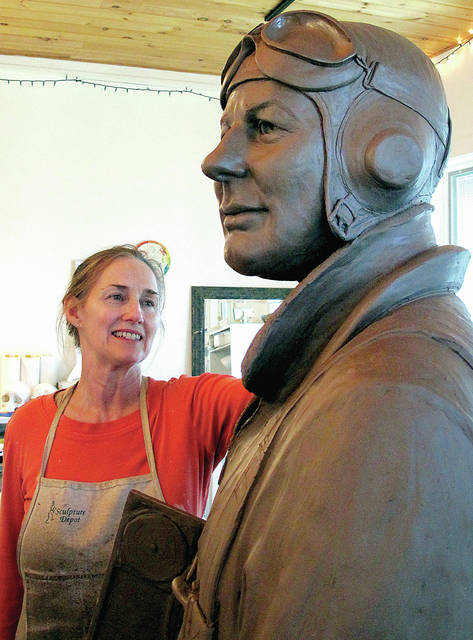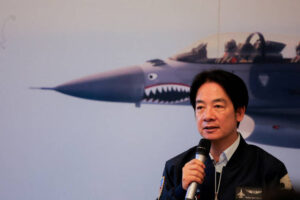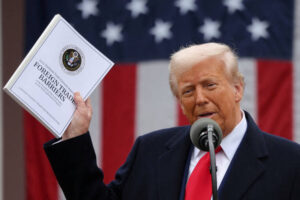ALBANY, N.Y. — C. Wade McClusky Jr. faced a tough decision on June 4, 1942: turn his low-on-fuel U.S. Navy air squadron around or keep searching for the Japanese fleet headed for Midway. He decided to go on and wound up changing history.
ALBANY, N.Y. — C. Wade McClusky Jr. faced a tough decision on June 4, 1942: turn his low-on-fuel U.S. Navy air squadron around or keep searching for the Japanese fleet headed for Midway. He decided to go on and wound up changing history.
The dive bombers McClusky led that day in the Battle of Midway helped to gut the Imperial Japanese Navy and turned the tide of the war in the Pacific in the Allies’ favor after a string of defeats following the attack on Pearl Harbor.
Today, 75 years to the day of his heroics, a clay model of a planned bronze statue of McClusky is being unveiled in his hometown of Buffalo, New York, as part of a new public memorial dedicated to local war heroes. McClusky, who died in 1976, is depicted as he looked after returning from the June 4, 1942, attack.
“Wade McClusky finally will be getting his due recognition,” said Lee Simonson, one of the organizers behind the event.”
McClusky, born in Buffalo in 1902, graduated from the U.S. Naval Academy in 1926 and earned his pilot’s wings a few years later. When the Japanese attack on Pearl Harbor drew America into the war, he was a lieutenant commander in charge of the air squadron aboard the USS Enterprise, which escaped harm on Dec. 7, 1941, because it was at sea with the other U.S. carriers.
In late May 1942, a large Japanese fleet was steaming toward the U.S. sea and air bases on Midway atoll, located about 1,300 miles northwest of Honolulu. Midway could provide the Japanese with a jumping-off point for more assaults on Hawaii, and possibly the West Coast.
The U.S. Navy, tipped off to the Japanese plans thanks to its breaking of the enemy’s naval codes, ordered its only three aircraft carriers in the Pacific — Yorktown, Hornet and Enterprise — to head off the attack. McClusky’s air squadron was tasked with finding the Japanese warships and sinking them. Despite the inside information, the planes initially were sent in the wrong direction after they took off on the morning of June 4.
More time — and fuel — was wasted as McClusky’s group circled while waiting for other carrier-based planes that didn’t show up. About two hours into the search and running low on gas, McClusky was faced with a choice: return to the Enterprise or keep searching, with the realization that most of his planes would have to ditch in the ocean. He kept going.
According to the U.S. Navy’s official account of the battle, McClusky soon spotted a Japanese destroyer and correctly surmised it was headed toward the main Japanese fleet. Around 10:20 a.m., he led 30 other Douglas SBD Dauntless dive bombers into the attack against the Japanese aircraft carriers.
When the day was over, the fliers from the Enterprise and Yorktown had sunk three carriers and mortally damaged a fourth. McClusky, wounded in the initial attack, made it back to his carrier with less than five gallons of fuel in his tank. Some of the other surviving two-man planes had even less. Ten planes in his squadron had to ditch in the sea and their crews were never found.




